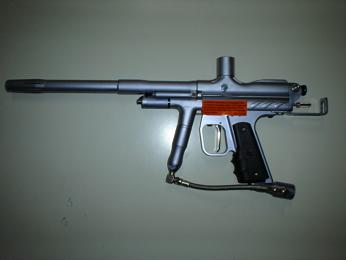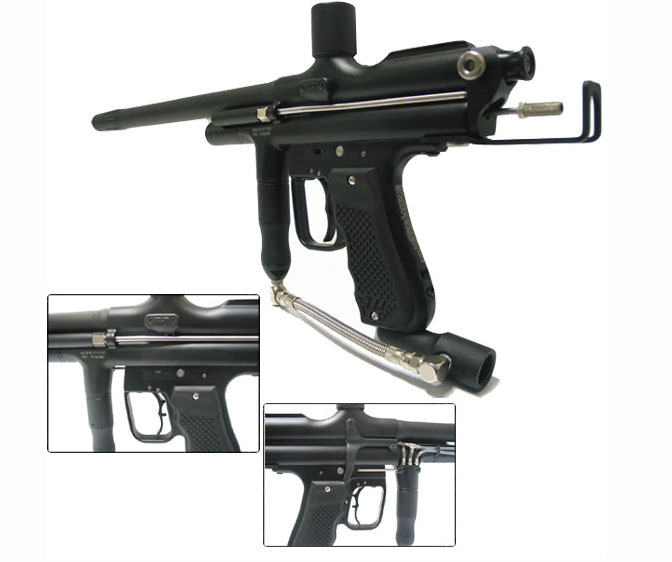



The backward movement simultaneously pulls the cocking rod back, causing the hammer to also be pulled back until it re-engages the sear. When the block moves backward, it pulls the bolt back, allowing a paintball to drop into the breech. The bolt is attached to the block, while a cocking rod (which is attached to the hammer and designed to catch on the block) passes through it. The bolt redirects the gas behind the paintball, propelling it out the barrel. It is a closed-bolt design, like all pump markers, and its operation can be broken down into two discrete phases, or cycles.Īt rest, the bolt sits forward, closing the chamber (hence, closed-bolt ).Ī pull of the trigger drops the sear, which in turn releases the hammer.Ī spring propels the hammer forward into the valve, which causes the valve to release a burst of gas upward into the bolt. Newer Autocockers with integrated, solenoid-controlled pneumatics remain available, boasting lesser maintenance and tuning.Ĭlassic Autococker models retain some popularity with recreational players, some of whom revert the design back to the pump-action Sniper concept for use in pump play. To this day, most high-end markers, and many entry-level as well, accept barrels with autococker threads. Indeed, the autococker was so ubiquitous that its barrel threading became one of the most commonly used standards on high-end markers (akin to how firearm cartridge sizes are often named for the first popular gun model or manufacturer to use them). Only the Automag rivaled it in popularity until electronic markers appeared. Throughout the remainder of the 1990s, dozens of shops ranging from large notables such as Dave Youngblood Enterprises (Dye), Shocktech, Planet Eclipse, Belsales and FreeFlow down to small one man pro-shop operations made a business of servicing and customizing Autocockers with price tags of nearly 2000 for high-end models.Ī combination of performance, upgradeability and cosmetic options made it one of the top tournament markers of the 90s. One of the most fundamental and important upgrades was the Palmer Rock low pressure regulator (LPR) to replace the troublesome stock LPR. The pneumatics automatically re-cocked the marker after each shot, and in 1989 the Autococker was born. In order to stay competitive with the rising popularity of semiautomatic markers in the late 1980s, Orr added a pneumatic system onto the Sniper. In 1987, Orr founded Worr Game Products to sell the products he was developing, and by 1988 he was running the business full-time. The Sniper was operated in a manner similar to pump-action shotguns in that it had to be manually recocked after each shot to load the next round.


 0 kommentar(er)
0 kommentar(er)
